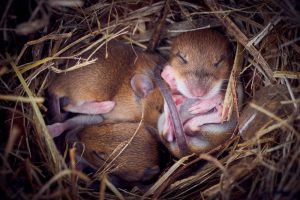Understanding Mouse Travel Distances: Home Range, Homing, and Movement Patterns

Introduction
Mice are among the most adaptable small mammals, found in diverse habitats across the world. Their ability to travel, either within a home range or when displaced, is critical to their survival and ecological impact. This article explores how far mice travel, the factors affecting their movement, and actionable steps for understanding or managing mouse populations.
Mouse Home Range: Typical Distances
The
home range
of a mouse refers to the area it regularly traverses for feeding, nesting, and social activities. Research on species such as the deer mouse (
Peromyscus maniculatus
) and yellow-necked mouse (
Apodemus flavicollis
) shows that home range sizes vary depending on species, habitat, and resource availability.

Source: test-wrkplan-marketing.com
For example, deer mice in sage-juniper habitats exhibit home ranges typically measured using the minimum convex polygon (MCP) method. These ranges can extend several hundred meters, though precise dimensions depend on local habitat structure and mouse behavior [1] . In yellow-necked mice, dispersal events have been recorded at distances averaging around 1,100 meters (~0.68 miles) [2] .
Wild house mice (
Mus musculus
) also demonstrate variability; some individuals migrate long distances between small home ranges, while others may cover kilometers daily, especially when resources are scarce or territories are shifting
[5]
.
How Far Will a Mouse Travel to Return Home?
When displaced, mice exhibit strong homing behavior , attempting to return to their familiar territory. The success and distance are influenced by several factors:
- Displacement distance: Experiments with white-footed mice show that homing ability declines with greater displacement. Many mice can successfully return home from up to several hundred meters, but success rates drop significantly beyond this range [4] .
- Environmental familiarity: Mice are more successful in returning if the habitat between their release point and home is familiar or offers sufficient cover.
- Vision and navigation cues: Studies indicate that vision and spatial memory play important roles in a mouse’s ability to navigate back [4] .
In practical terms, a mouse displaced within 100-300 meters of its home may often return, especially in natural or semi-natural settings. Beyond 500-1000 meters, the likelihood diminishes sharply, though exceptional cases of longer homing journeys have been documented, particularly among young or dispersing individuals [2] . Migration or dispersal for territory establishment can extend beyond normal home range limits.
Factors Influencing Mouse Travel Distances
Several key factors shape how far mice travel:
- Resource availability: Abundant food can shrink home ranges; scarcity may expand them as mice search for resources [2] .
- Habitat structure: Dense vegetation or fragmented landscapes affect navigation and movement patterns [1] .
- Population pressure: High mouse density can lead to increased dispersal, competition, and longer travel distances [3] .
- Season and climate: Seasonal changes, such as breeding or reduced food supply, may trigger longer movements or migration.
- Human activity: Urbanization, agricultural development, and habitat alteration can force mice to move greater distances, seeking suitable environments [3] .
Studying Mouse Travel: Methods and Practical Steps
Understanding mouse travel distances helps wildlife managers, researchers, and pest control professionals address ecological challenges. Here are practical steps and approaches:
- Radio tracking and PIT tags: Modern studies use radio collars or passive integrated transponder (PIT) tags to monitor mouse movement. Data loggers and mapping software help estimate home ranges and track dispersal events [1] .
- Live trapping and release: Mark-recapture methods enable researchers to observe homing behavior and measure the success rate of mice returning after displacement [4] .
- Habitat surveys: Regular surveys of vegetation, food sources, and shelter availability can help predict likely mouse movement patterns.
For those interested in monitoring or managing mice in a local setting, contacting a university extension office or a wildlife research organization can provide guidance on ethical and effective study methods. Many academic institutions publish open-access research and guides on small mammal ecology.
Application: Pest Management and Wildlife Observation
If you are dealing with mice as household pests or monitoring wildlife:

Source: gsaschedule.com
- Pest management: Understanding travel distances informs trap placement and exclusion strategies. Place traps near suspected nest sites and along travel corridors, typically within 30 meters of known activity. For persistent problems, consult local pest control professionals or search for “rodent control” through your city or county’s public health department.
- Wildlife observation: Observers can use trail cameras and live traps to study movement patterns. If you wish to conduct research, check with your local university’s biology department for opportunities to participate in citizen science projects on small mammals.
- Legal and ethical considerations: Always ensure compliance with local wildlife regulations. Many states require permits for trapping or relocating wild animals. Search for “wildlife permit” on your state’s official government website for details.
For broader ecological questions, such as the impact of species like the striped field mouse on native communities, consult recent scientific publications and reach out to regional ecological research centers for the latest findings and recommendations [3] .
Challenges and Alternative Approaches
Tracking and understanding mouse travel presents challenges:
- Environmental variability: Mouse movement is highly context-dependent. Results from one habitat may not apply elsewhere.
- Technological limitations: Equipment for tracking small mammals can be expensive and requires technical expertise.
- Data interpretation: Home range estimates vary with methodology. Minimum convex polygon (MCP) and kernel density estimates may yield different results [1] .
Alternatives to direct tracking include habitat modeling, genetic studies to assess dispersal, and collaborative citizen science projects hosted by universities or conservation organizations. For those unable to access specialized equipment, systematic observation and record-keeping can provide valuable insights.
Key Takeaways
Mice travel within home ranges typically spanning several hundred meters, with some species capable of returning home after displacement up to a kilometer or more, though success declines with distance. Movement is shaped by resources, habitat, population dynamics, season, and human activity. Studying these patterns requires careful observation, ethical compliance, and consideration of local regulations. For pest management or research, use evidence-based methods and consult local experts or official agencies for guidance.
References
- [1] ScholarsArchive@BYU (2010). Deer mouse home-range size and fidelity study.
- [2] Journal of Mammalogy (2009). Spatial organization of the yellow-necked mouse.
- [3] Frontiers in Zoology (2023). Striped field mouse range expansion impact analysis.
- [4] JSTOR (1980). Influence of displacement distance and vision on mouse homing.
- [5] The Jackson Laboratory (n.d.). Lifestyles and adaptability of wild house mice.






